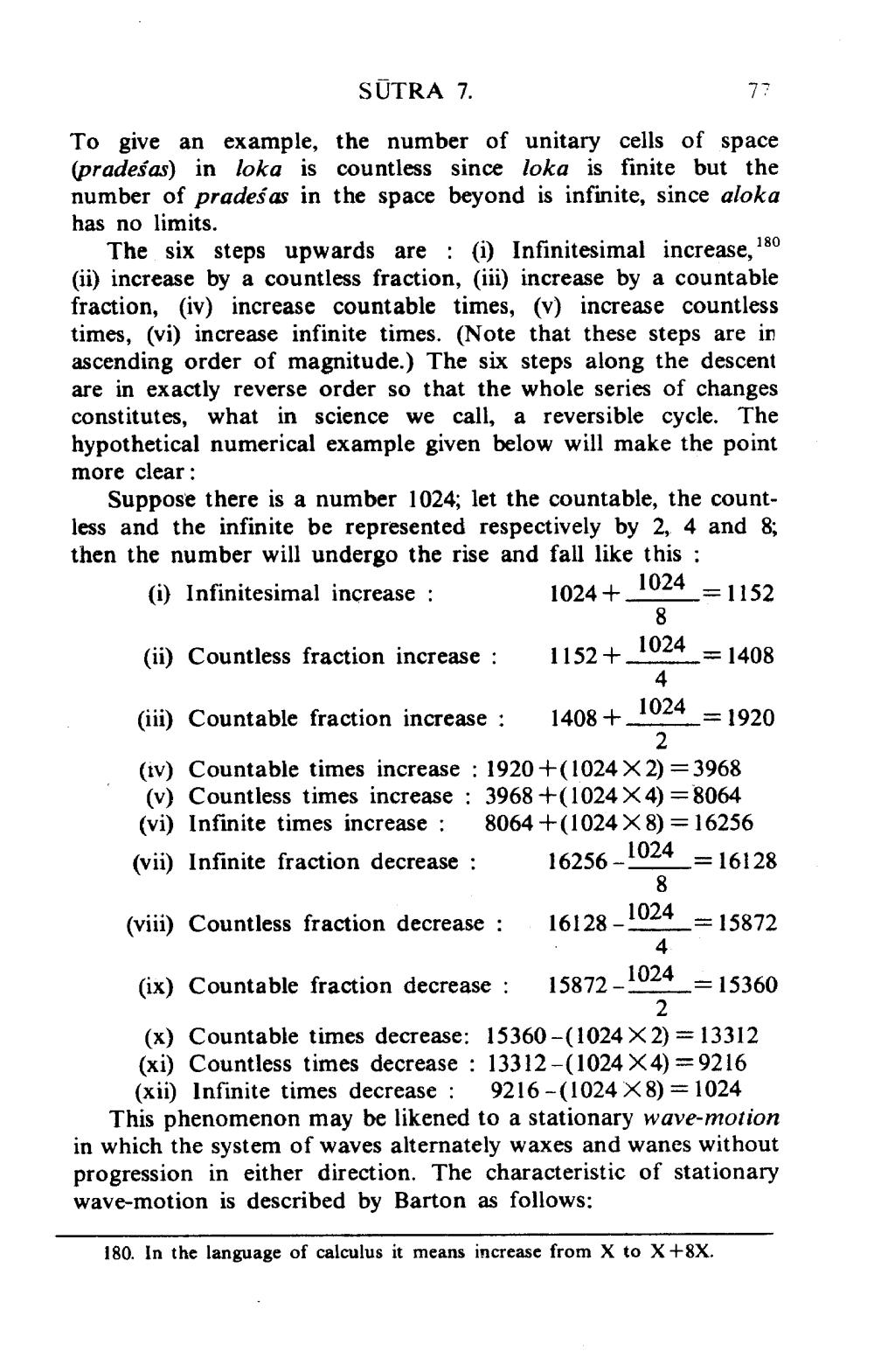________________
SUTRA 7.
77
To give an example, the number of unitary cells of space (pradeśas) in loka is countless since loka is finite but the number of prades as in the space beyond is infinite, since aloka has no limits.
The six steps upwards are : (i) Infinitesimal increase, 180 (ii) increase by a countless fraction, (iii) increase by a countable fraction, (iv) increase countable times, (v) increase countless times, (vi) increase infinite times. (Note that these steps are in ascending order of magnitude.) The six steps along the descent are in exactly reverse order so that the whole series of changes constitutes, what in science we call, a reversible cycle. The hypothetical numerical example given below will make the point more clear :
Suppose there is a number 1024; let the countable, the countless and the infinite be represented respectively by 2, 4 and 8; then the number will undergo the rise and fall like this: (i) Infinitesimal increase :
1024+ 1024 = 1152
8
(ii) Countless fraction increase :
1152+ 1024 = 1408
Countable fraction increase :
1024 1408 +
= 1920
2 (iv) Countable times increase : 1920+(1024 X 2) =3968
(v) Countless times increase : 3968 +(1024 X 4)=8064 (vi) Infinite times increase : 8064 +(1024 X 8) = 16256 (vii) Infinite fraction decrease : 16256-1024_=16128
(viii) Countless fraction decrease :
16128 -1024_=15872
(ix) Countable fraction decrease : 15872-1024_=15360
2 (x) Countable times decrease: 15360-(1024 X 2) = 13312 (xi) Countless times decrease : 13312-(1024 X 4)=9216
(xii) Infinite times decrease : 9216-(1024 X 8) = 1024
This phenomenon may be likened to a stationary wave-motion in which the system of waves alternately waxes and wanes without progression in either direction. The characteristic of stationary wave-motion is described by Barton as follows:
180. In the language of calculus it means increase from X to X+8X.




